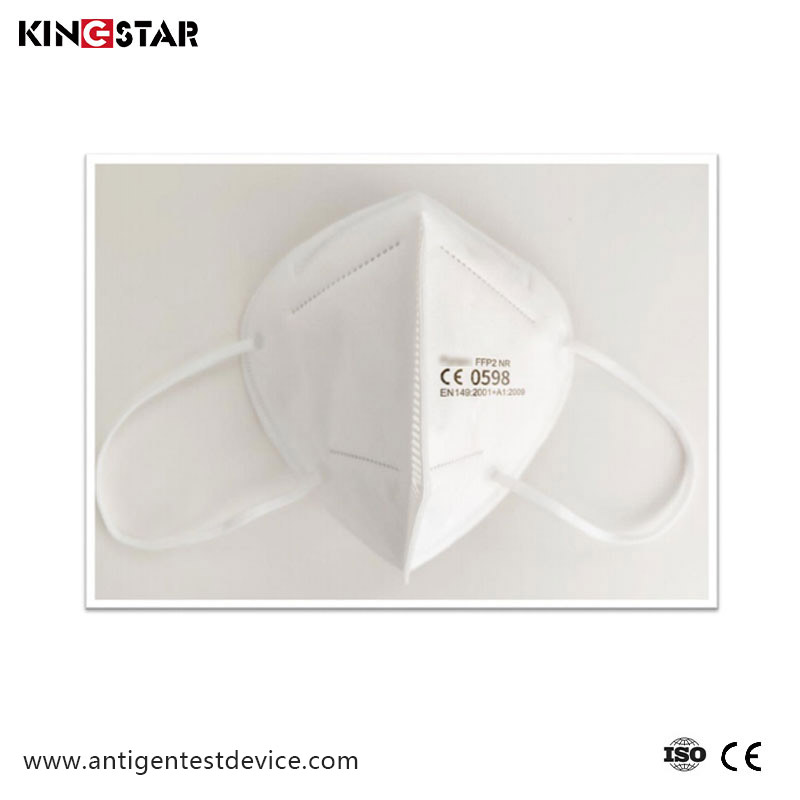How do you choose the right size Protective Isolation FFP2 Face Mask?
2024-10-11

How do you choose the right size Protective Isolation FFP2 Face Mask?
One of the most important factors to consider when choosing a Protective Isolation FFP2 Face Mask is the size. Wearing a mask that does not fit properly can result in gaps that allow harmful particles to enter and compromise the effectiveness of the mask. To choose the right size, you should measure the distance from the bridge of your nose to the point of your chin. This measurement can then be compared to the sizing chart provided by the manufacturer to determine the appropriate size.What are the benefits of using Protective Isolation FFP2 Face Mask?
Protective Isolation FFP2 Face Mask offers a number of benefits, including effective filtration of both large and small particles, reducing the risk of exposure to airborne pathogens, and providing respiratory protection in high-risk environments. These masks are designed to be comfortable and easy to wear for extended periods of time, making them a popular choice for healthcare professionals and others who are exposed to potentially harmful particles on a regular basis.How long can you use Protective Isolation FFP2 Face Mask?
The length of time that you can use a Protective Isolation FFP2 Face Mask will depend on a number of factors, including the intensity of use and the level of exposure to harmful substances. In general, these masks should be replaced after each use or after a maximum of 8 hours of continuous use. It is important to follow the manufacturer's instructions for use and disposal of the mask.What is the difference between Protective Isolation FFP2 Face Mask and other types of masks?
Protective Isolation FFP2 Face Mask is specifically designed to provide high-level respiratory protection against airborne particles and infections. Unlike other types of masks, such as surgical masks or cloth masks, FFP2 masks offer a higher level of filtration and are designed to fit snugly to the face to reduce the risk of exposure to harmful particles. In conclusion, Protective Isolation FFP2 Face Mask is a type of respiratory protective equipment that offers effective filtration and protection against airborne particles and infections. Choosing the right size is important to ensure the maximum effectiveness of the mask. By using Protective Isolation FFP2 Face Mask, individuals can reduce their risk of exposure to harmful substances and protect their respiratory health.KINGSTAR INC is a leading supplier of high-quality respiratory protective equipment and medical supplies. Our products are designed to provide effective protection against a range of harmful substances and infections. To learn more about our products and services, please visit https://www.antigentestdevices.com. For inquiries or to place an order, please email us at info@nbkingstar.com.
References:
1. Li Y, Tokura H, Guo YP, Wong AS. Effects of wearing N95 and surgical facemasks on heart rate, thermal stress and subjective sensations. Int Arch Occup Environ Health. 2005;78(6):501-509.
2. Roberge RJ, Coca A, Williams WJ, Powell JB, Palmiero AJ. Surgical mask placement over N95 filtering facepiece respirators: physiological effects on healthcare workers. Respirology. 2010;15(3):516-521.
3. Johnson AT. Respirator masks protect health but impact performance: a review. J Biol Eng. 2016;10:4.
4. Oberg T, Brosseau LM. Surgical mask filter and fit performance. Am J Infect Control. 2008;36(4):276-282.
5. Long Y, Hu T, Liu L, et al. Effectiveness of N95 respirators versus surgical masks against influenza: A systematic review and meta-analysis. J Evid Based Med. 2020;13(2):93-101.
6. MacIntyre CR, Chughtai AA. Facemasks for the prevention of infection in healthcare and community settings. BMJ. 2015;350:h694.
7. Fischer EP, Fischer MC, Grass D, Henrion I, Warren WS, Westman E. Low-cost measurement of face mask efficacy for filtering expelled droplets during speech. Sci Adv. 2020;6(36):eabd3083.
8. Leung NHL, Chu DKW, Shiu EYC, et al. Respiratory virus shedding in exhaled breath and efficacy of face masks. Nat Med. 2020;26(5):676-680.
9. van der Sande M, Teunis P, Sabel R. Professional and homemade face masks reduce exposure to respiratory infections among the general population. PLoS One. 2008;3(7):e2618.
10. Jefferson T, Jones M, Al Ansari LA, Bawazeer GA, Beller E, Clark J, et al. Physical interventions to interrupt or reduce the spread of respiratory viruses. Cochrane Database Syst Rev. 2011;(7):CD006207.



